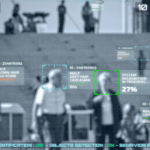The Coming Biometric Digital ID Will Facilitate Nationwide Surveillance

“Identity is a combination of characteristics or attributes that allows a person to be uniquely distinguished from other people within a specific context,” the Albanese government’s 2023 National Strategy for Identity Resilience sets out in bold on its introductory page.
“To prove our identity, we use attributes or characteristics such as our date and place of birth,” which is a pretty straightforward concept for most Australians to grasp. But the strategy further advises that “increasingly biometrics, such as an image of our face” is part of this system.
Jointly released by finance minister Katy Gallagher and home affairs minister Clare O’Neal, the strategy “consists of ten principles to guide identity resilience” with “immediate, medium and long-term initiatives that will strengthen identity security arrangements across jurisdictions”.
Gallagher then told AFR last week that an exposure draft, of what the former Coalition government initially proposed, should be released by September, with the rollout, of what’s being presented as a safeguard against the massive data breaches of last year, being potentially set for mid-2024.
The minister noted that there are opponents to the scheme, as there has been to every such national ID proposal since the 1980s Australia Card, yet she failed to mention that it also partly establishes the type of system ex-home affairs minister Peter Dutton has long desired to surveil the public.
Bipartisan approval
The data and digital ministers meeting (DDMM), which comprises of the federal, state and territory ministers responsible for those portfolios, announced the release of the strategy in June, which it developed in collaboration with Home Affairs.
In order for the public to build resilience against the onslaught of cybercrime, according to the government, it’s about to roll out a federated digital ID system, linking preexisting state and territory models, to provide “identity resilience” across jurisdictions with “consistent national standards”.
A digital ID is said to be a “highly secure credential” that can be used instead of physical documents and details to prove one’s identity, as they will now be stored online as part of the ID, and, with an individual’s consent, biometric data will be added to heighten security.
Prototypes of this federated system operating around the nation right now will become interoperable, and these have so far been developed in relation to civilians and businesses identifying themselves to government departments to access services.
The Digital Identity System has allowed users to identify themselves to government departments via digital ID since the Coalition rolled it out in 2015. So, rather than each department requiring proof of identity stored on their system, each entity verifies an individual against their digital ID, which is stored on a government database.
The digital ID system will initially be overseen by the Australian Competition and Consumer Commission (ACCC), minister Gallagher has explained, which will then be handed over to a regulatory body established to oversee it going into the future.
The document also assures that for those who will have trouble using the digital ID, nondigital options will be available “where practical”.
Although looking three to five years down the track, the strategy does envisage replacing compromised credentials with a digital, rather than physical, copy.
And while the scheme is already operating in part with a number of government departments involved, the Albanese government envisages that the proposal will operate across all departments and eventually have whole-of-economy reach.
Indeed, government departments are being incentivised to incorporate the digital identification into their systems, so one can only presume that private businesses and interests will be offered advantages if they move towards the federated digital identification system as well.
Voluntary to a point
Gallagher further assured the press that the digital ID is an improvement on current systems as it won’t involve a number or a card, rather it’s “about citizens having control of their information that allows them to access government systems in a very easy, secure, voluntary and efficient way”.
But there are questions about how voluntary it will be.
“Schemes are always trumpeted as being voluntary at the beginning and are always designed on the assumption that they will become mandatory soon afterwards,” UNSW Visiting Law Professor Dr Roger Clarke said in April. “In the private sector, this technique is called ‘bait-and-switch’.”
Yet, Sydney Criminal Lawyers is aware of at least one instance where a workplace had suggested its employees might all be required to obtain digital identification, via the myGovID app, as their roles were going to require them to enter information onto a platform accessed via their online ID.
So, if one workplace is considering a mandatory digital ID for employees, it seems likely that others will follow suit.
The Capability
Another aspect to the national digital identification system the Albanese government is attempting to establish by mid-next year is that it will incorporate and store all driver licence and passport ID photos, as well as any additional biometric details added.
The linking of photo ID databases was a proposal then Home Affairs minister Peter Dutton was spruiking in 2018, as part of the broader agenda of establishing the National Facial Biometric Matching Capability, also known simply as the Capability.
If established, the Capability would have succeeded in linking all state, territory and federal photo identification databases through a single hub, which would then allow law enforcement to match still images sourced from CCTV cameras nationwide with ID photos in real time.
The Capability was first proposed by former attorney general George Brandis mid-last decade, and he oversaw the rollout of a manual version that commenced operating in 2016, at the federal level, where it’s been applied to stored passport, immigration and visa photos.
The NSW government passed 2018 legislation to facilitate the incorporation of this state’s ID photo database into the national surveillance scheme, following the October 2017 Intergovernmental Agreement on Identity Matching Services, which saw all jurisdictions sign up to the program.
Although a number of Coalition bills designed to facilitate the incorporation of all Australian citizen and resident identification photos, via an established hub, were introduced under both Turnbull and Morrison, yet these went on to lapse in parliament.
But if Albanese succeeds in establishing a federated digital ID system, which is a big if considering the number of times since the Australia Card that the public has rejected such proposals, it will not only have compiled a database with all citizens’ details, but it too will have contain all ID photos.
And this biometric technology that will allow civilians to unlock the services of government departments via an app on their phones, is likely, with a bit more legislative tinkering, to serve as a way to track down citizens and residents identified by CCTV anywhere in the country.







